Nissan X-Trail Facelift First Impressions (Hybrid vs 2.5L 4WD)
The facelifted X-Trail is quite an interesting car. It represents quite a few firsts for Edaran Tan Chong Motor (ETCM) and the local automotive scene. With the Proton X70 eating up a lot of demand in the segment, it has become quite important for non-national brands to push their USPs harder, and these new X-Trail models seem to have quite a few. Perhaps its biggest claim to fame is that it’s the first mainstream C-segment SUV to be offered with a hybrid powertrain. SUVs are known for being more thirsty than their sedan counterparts, so it’s certainly something some buyers might want to look at.

It’s also quite a shift for the otherwise traditional ETCM. For the first time in their history, they’ve dropped their C- and D-segment sedan offerings altogether. That means that if you’re looking for a top-of-the-line luxobarge with a Nissan badge, the X-Trail is perhaps where you’ll end up looking.
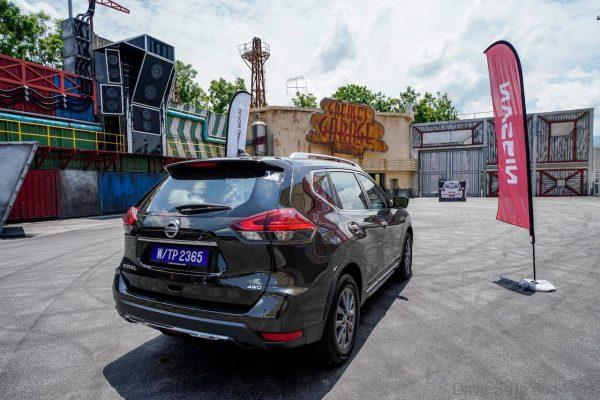
It’s a good thing then, that ETCM have given Malaysians two flavours of their new SUV flagship. Those looking for a versatile and conventional vehicle have the 2.5-litre 4WD model, while those in the market for a more high-tech and comfortable SUV have the Hybrid. Let’s look at what these two models share before pointing out what distinguishes them.
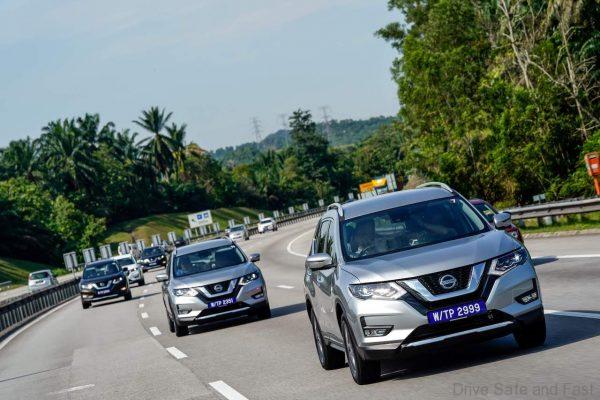
Similarities
ETCM have imagined these as twin flagship models, so there’s really no major piece of equipment or design feature that’s missing on either vehicle.
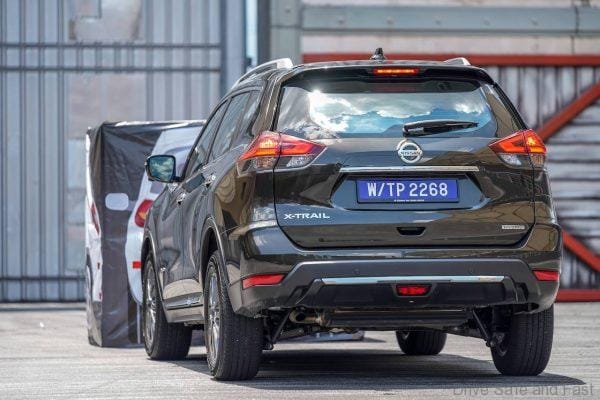

Key features on both models include:
- Forward Collision Warning
- Autonomous Emergency Braking
- 6 airbags*
- High Beam Assist
- Lane Departure Warning*
- Blindspot Warning*
- Rear Cross Traffic Alert*
- LED headlights with ‘Boomerang’ DRL*
- 17″ rims in dark finish*

*Available on lower tier X-Trail variants as well
Differences
There are a few places where you can find the differences between these two top X-Trails. Externally, of course, there’s the ‘HYBRID’ and ‘4WD’ badging that immediately identify each model.

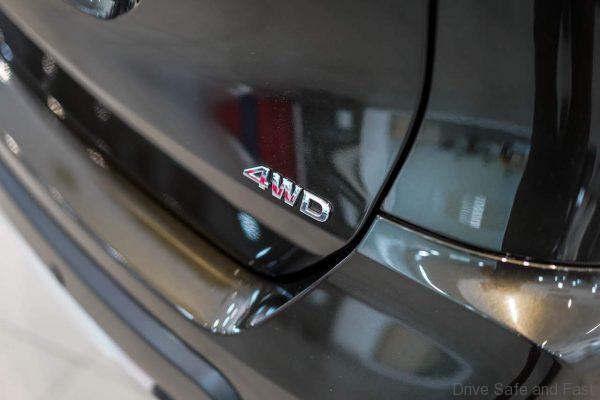
Before you step inside, pop open the powered tailgate and you’ll find the next difference. The 2.5L 4WD model comes with a third row of seats that can be folded down for more luggage space. The Hybrid gets a raised boot floor with a hidden compartment.

The 2nd row of seats on the 2.5L 4WD model are similar to the ones seen on the pre-facelift in that they are fitted on rails. Their slide and tilting functions are targeted more at making things easier for those in the last row and the railing makes the 2nd row seats feel a little higher and less ergonomic than they ought to be in this class.

The Hybrid model’s rear seats on the other hand are damn near perfect. They’re fixed, allowing no slide or tilt adjustments, but they’re almost twice as plush as the ones in the other X-Trail models. They’re also better contoured, more comfortable and feature a much wider and better bolstered centre armrest.
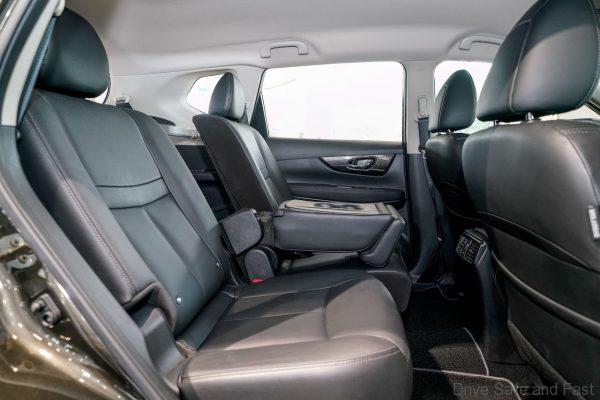
At the front, we’re back to mostly similarities between the two models. However, the Hybrid’s instrument cluster display has much more information.

Of course, you’ll also find two different powertrains sitting under the hood. Both are 4-cylinder, naturally aspirated petrol motors paired to X-Tronic CVTs, but that’s about as far as the similarities go.


As one can imagine, the 2-litre Hybrid model’s setup is far more complex, with an electric motor, a dual-clutch system between that and the transmission, energy recovery systems, and much more.
Which is Better?
In terms of performance, they’re both good at their own things. The Hybrid accelerates more aggressively when pushed, delivers great fuel savings. The instant torque from the electric motor is a good substitute for what you’d get out of a smaller, turbocharged engine. Its biggest disadvantages are the strange brake pedal feel (which you will eventually get used to) and the added complexity of the hybrid system to deal with at the end of your ownership period. That being said, ETCM stated that the Intelligent Dual Clutch Control system would allow the X-Trail Hybrid to be driven like a regular petrol powered car if the Hybrid system ever gave you problems.

The 2.5L 4WD is more capable of putting its power down from a standing start, as the power bias automatically moves to the rear wheels under acceleration. This advantage fades away within a second or two, once the Hybrid finds its footing.
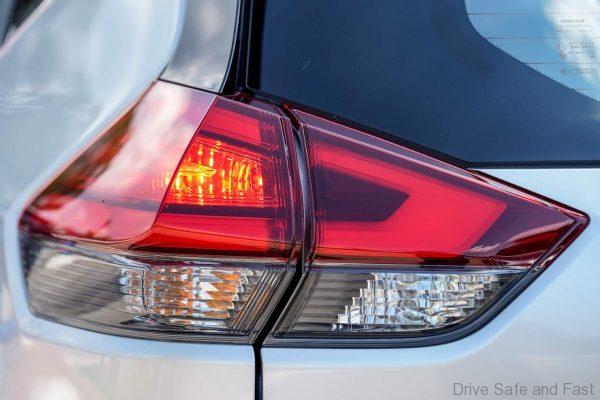
Honestly, they’re C-segment SUVs and finding out which one’s actually the fastest feels like a bit of a pointless exercise. What the 2.5L model is much better at highway cruising and has a more natural brake pedal feel. Nissan’s MR and QR engines are generally quite quiet and smooth, so both cars score rather well in terms of NVH. Just drive them like they’re meant to be driven and you’ll enjoy them plenty. The 2.5L model’s disadvantages are that it’s naturally more thirsty and that it does feel a little out of place in 2019 next to all the electrification and downsizing that’s been going on. Still, we appreciate it for its relative simplicity and pleasant cruising character.

Both cars are, again, very well equipped. You’ve got advanced safety systems that’ll stop the car in emergencies, 6 airbags, and a few nice little tricks like Intelligent Trace Control that make the X-Trail deliver in terms of value. But these twin flagships are made for two different customers.
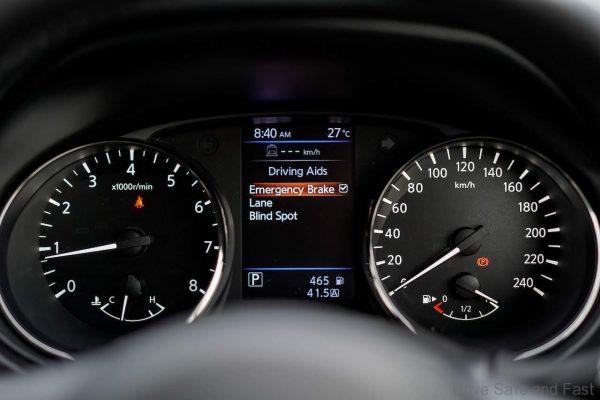
The Hybrid feels like it’s aimed at a more modern, smaller family unit. The seats in the rear are genuinely plush while the Hybrid system might appeal to eco-conscious parents. The 2.5L AWD is for the more traditional buyer with a larger family. The rear seats are serviceable for children and the proven engine plays to Nissan’s strongest advantage.
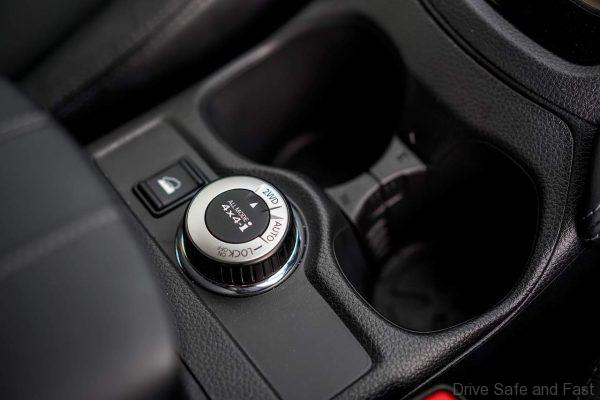
If all that text was too taxing to read, check out our first impressions video here. We don’t go into performance much, but there’s enough there to point you in the right direction.
Nissan X-Trail Hybrid Specifications
Engine: Inline 4 petrol + Electric Motor
Capacity: 1997cc
Gearbox: XTRONIC CVT with 7-speed mode + Intelligent Dual Clutch Control
Max power: 142hp @ 6000rpm +41PS
Max torque: 200Nm @ 4400rpm +160Nm
Price: RM159,888
Nissan X-Trail 2.5L 4WD Specifications
Engine: Inline 4 Petrol
Capacity: 2488cc
Gearbox: XTRONIC CVT with 7-speed mode
Max power: 169hp @ 6000rpm
Max torque: 233Nm @ 4000rpm
Price: RM153,888